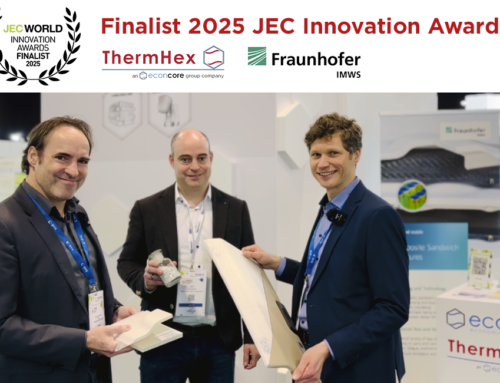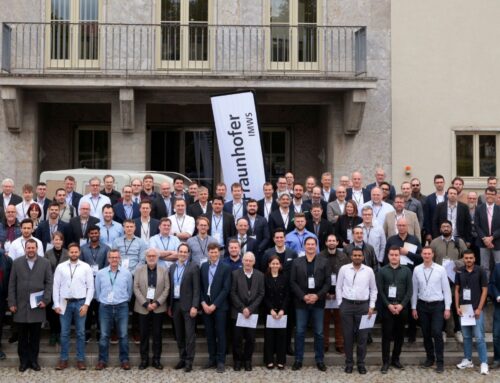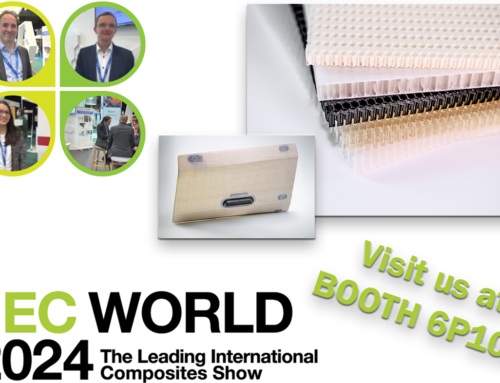Quelle: CCeV magazin, 4/2016
ThermHex Waben’s polypropylene honeycomb cores offer today a reduction of costs and weight to a wide variety of applications such as truck and trailer bodies, in caravan industry or manufacturing of prefabricated bathrooms, shower tubs and swimming pools.
Different to the traditional manufacturing of thermoplastic honeycomb cores in dis-continuous production processes the continuous ThermHex production process allows for a considerable reduction of production costs and material and energy consumption. Thanks to that, customers of producer ThermHex Waben benefit from a distinct price advantage. Moreover, the continuous production process with integrated recycling of the minimal production waste enables the economical usage of resources and improves the CO2 footprint. Another advantage of the automated in-line production is the automated continuous quality control.
Sandwich constructions with honeycomb cores and the consequently reduced weight have proven to give a positive effect in energy consumption and environmental balance to many applications. The cost reduction in honeycomb core production now enables to combine these advantages with a price advantage and thus use honeycomb sandwich constructions also in cost sensitive applications. The price advantage especially beco-mes clear for thinner thicknesses, as these require a big amount of production waste and work force when being produced in traditional processes, while the ThermHex production process allows for an efficient production even for smaller thicknesses.
ThermHex Waben GmbH therefore adds to their product range a PP honeycomb core in 5 mm and 6 mm thickness. Next to the known thicknesses of 3,5 mm and 8-28 mm the user is now being offered a bigger choice of thicknesses and further potential for optimization.
The new thicknesses also offer an alterna-tive to resin impregnated mat core materials. A comparison of a sandwich made with such a material and a sandwich with the 5 mm ThermHex PP honeycomb core reveals a potential of a weight saving of 14 percent with a cost saving of 28 percent, while the flexural stiffness of the sandwich increases by 50 percent.









